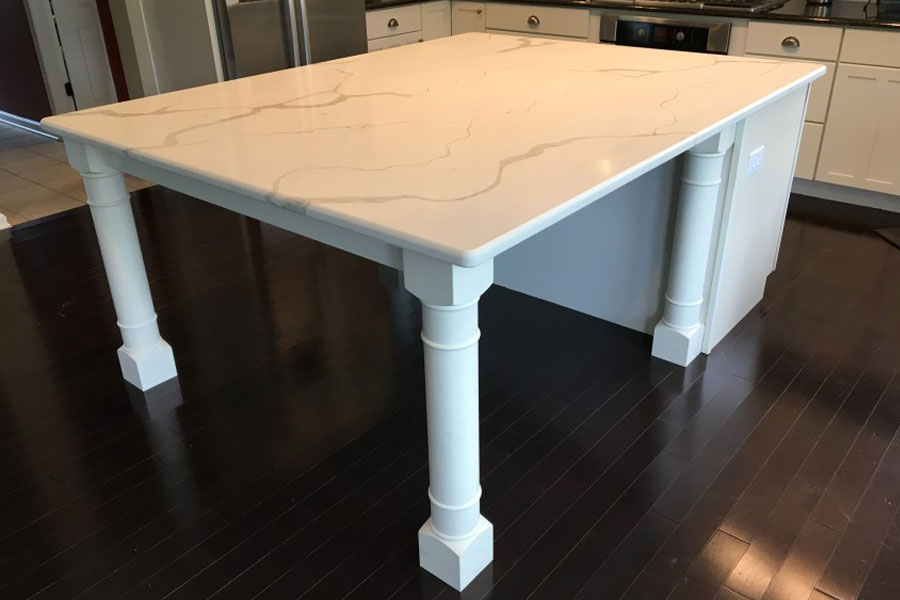Change Your Kitchen with Gorgeous Kitchen Island Legs
Change Your Kitchen with Gorgeous Kitchen Island Legs
Blog Article
Essential Tips for Picking the Perfect Eating Table for Your Kitchen
Selecting the perfect eating table for your kitchen area is more than simply an issue of taste; it necessitates an extensive understanding of your space and demands. The form of the table plays an essential function; while rectangular tables fit bigger locations, round ones foster intimacy, and extendable alternatives supply adaptability. The table ought to balance with your cooking area's looks and suit your family pleasantly.
Measure Your Area
Choosing the perfect dining table starts with a thorough assessment of your readily available room. This fundamental action ensures that the table not only fits comfortably within the room however likewise complements the general layout and capability of your eating location.
Consider the flow of activity around the table. It is vital to leave sufficient area for chairs to be pulled out and for people to move the table without obstruction. A basic regulation of thumb is to permit at the very least 36 inches of clearance from the edge of the table to the closest wall surface or furniture piece. This guarantees convenience of access and comfort throughout meals.
Additionally, believe regarding the variety of individuals you usually captivate and whether you need added area for visitors. Deciding for an extendable table can supply flexibility, enabling you to suit varying numbers of diners. By properly gauging your room, you lay the groundwork for choosing an eating table that enhances both the aesthetics and capability of your dining area.
Select the Right Forming

On the various other hand, round tables are superb for smaller sized kitchens or intimate events, as they promote discussion by allowing everyone to face each other. They also give a feeling of comfort and can fit well in tighter spaces due to their absence of sharp corners. Oblong tables offer the best of both worlds, combining the size of rectangular tables with the affection of round ones, making them functional for various setups.
Square tables are an additional alternative, especially suited for square-shaped areas. They produce a modern and symmetrical appearance, promoting an equal dining experience for all seated. They might be much less sensible for larger gatherings unless they come with extensions. Eventually, the shape you select should straighten with your room dimensions and way of life to ensure both type and feature.
Material Considerations
When selecting a table, material considerations are vital in establishing the table's longevity, upkeep demands, and general aesthetic. Wood is a traditional option, offering classic allure and robustness. Woods like walnut, mahogany, and oak are especially long lasting, though they can be expensive. kitchen island legs. Softwoods, such as pine, are much more economical yet might be vulnerable to damages and scratches.
Glass-topped tables provide a modern-day, smooth look and can make a room appear larger because of their openness. They need regular cleansing to avoid finger prints and smudges. Additionally, toughened up glass is suggested for its additional stamina and safety.

Last but not least, composite products like MDF (Medium-Density Fiber board) or plywood are affordable alternatives. These materials can resemble the appearance of strong timber but might not offer the same longevity. They are normally much easier to tidy yet can be susceptible to water damages if not properly secured.
Ultimately, the choice of product ought to straighten with your kitchen's style, your lifestyle requires, and your spending plan constraints. (kitchen island legs)
Seating Ability and Comfort
Exactly how do you figure out the ideal seating capability and comfort for your eating table? For a family of four, a rectangle-shaped table of 48 inches long or a round table with a 48-inch diameter is normally enough.
The height of the table need to preferably be around 30 inches, giving a well balanced ergonomic position for seated restaurants. Chairs should have a seat elevation of 18 to 20 inches to make sure a comfortable dining pose.
Design and Appearance
Selecting Read Full Article a dining table that fits your design and looks includes stabilizing individual taste with the existing decoration of your eating area. The eating table is typically the centerpiece of the kitchen, and its layout needs to match the overall theme of the space. Whether your cooking area boasts a contemporary, minimal appearance or a rustic, farmhouse beauty, the table you pick must harmonize with these elements to create a natural and inviting ambience.
Consider products carefully; timber supplies a classic charm and can vary from abundant mahogany for a conventional want to lighter oak for a modern feel. Metal and glass tables, on the various other hand, pop over here can introduce a sleek, industrial edge to your kitchen area. Don't neglect the table's form-- rectangle-shaped tables are traditional and functional, while round and oblong alternatives can cultivate a much more intimate dining experience.
In addition, pay attention to surfaces and details. A troubled surface could add character and heat, whereas a shiny surface can add to a tidy, contemporary aesthetic. Ultimately, your dining table should not just healthy effortlessly right into your kitchen's design but also mirror your personal design, elevating the area both functionally and visually.
Verdict
In conclusion, choosing the ideal dining table for a cooking area demands careful analysis of area, shape, material, seating capacity, and visual consistency. Ultimately, a well-chosen eating table promotes a welcoming ambience and fits the household easily, thus improving the dining experience.

When choosing an eating table, material considerations are vital in determining the table's resilience, maintenance needs, and overall visual. For a family members of 4, a rectangular table of 48 inches long or a round table with a 48-inch size is normally adequate.
Do This Site not neglect the table's shape-- rectangular tables are classic and flexible, while round and oval alternatives can foster a more intimate eating experience. kitchen island legs.
Report this page